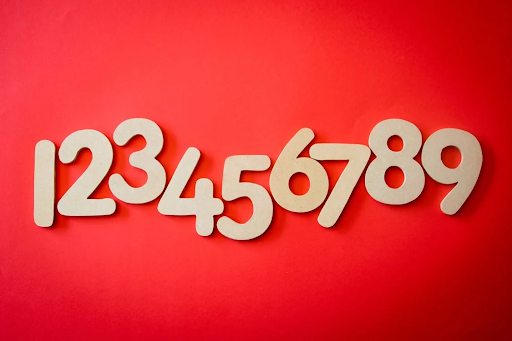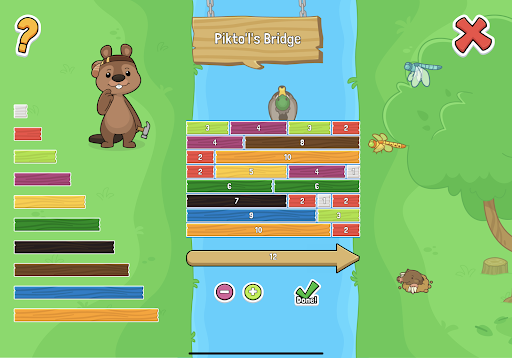Play-based learning has always been a major staple of early childhood education.
In kindergarten and in the early primary grades, engaging students is as important as teaching students. This is especially true for mathematics, where negative experiences can dissuade a student from further pursuing the subject.
Encouraging and motivating a student during their early math experiences allows them to develop a keen interest in math. Such enjoyment and persistence in learning math pays off. Students explore creative ways to advance their learning instead of being discouraged and frustrated.
Play-based learning drives engagement in the early years.
Technology facilitates play.
In this article, we explore technology’s potential in teaching early math skills.
Technology’s Role in Teaching Early Math Skills

By engaging students early on using technology, educators have more power to teach the essential math skills and concepts.
When you can capture a student’s attention, teacher’s are in a better position to deliver the content and concepts of the lesson.
Technology also enables teachers to monitor the progress of students and collect valuable insights.
It’s a way to differentiate instruction and ensure all students benefit from personalized instruction.
The Sprig Math program is an example of leveraging technology to teach early math skills.
It provides every child a strong foundation in early numeracy by focussing on the underlying concepts (or processes) that are critical to success in mathematics.
The intuitive Sprig Math app is easily downloadable by teachers and parents alike.
The program combines technology and classroom resources such as the Sprig Math Classroom Kit. It fits seamlessly into day-to-day lesson plans mapped to the local curriculum.
The Right Way to Teach Early Math Skills and Technology’s Fit

High-quality, challenging and accessible mathematics education for 3 to 8 year olds is necessary to build the right foundation for future mathematics learning.
The National Council of Teachers of Mathematics (NCTM) lists 6 principles for school mathematics that are relevant across all grade levels, including early childhood. They are:
Equity: Equally high expectations and strong support for all students.
Curriculum: Coherent, well articulated, and focused on important mathematics.
Teaching: Understanding what students need to learn and then challenging and supporting them to learn it well.
Learning: Learning mathematics by understanding and actively building new knowledge.
Assessment: Supporting the learning of important math concepts and providing useful information to both teachers and students.
Technology: Influencing the mathematics that is taught and enhancing student’s learning.
Taking a look at Sprig Math, it is carefully designed to meet all the criteria for effective early math instruction. It uses holistic assessments to identify the strengths, interests and needs of every learner, thus ensuring educational equity for diverse learners.
The Sprig Math program maps to local curriculum and supports the teaching of essential math skills with targeted learning activities.
Students benefit from learning the underlying math processes, which helps them develop a deeper understanding of early math and build a strong foundation for success. This learning is made possible by the Sprig Math App, an example of technology that enables educators to more effectively enhance learning, differentiate instruction and manage a classroom of diverse learners.
Thus we see that technology is fast becoming an inseparable part of teaching mathematics in early childhood education.
It is a strong facilitator of the principles of teaching math, and it is a principle in itself.
From Math Apps to Math Games

We see that technology is an instrumental part of teaching early math. Examples include apps, assessments, etc. What about interactive technology?
Studies have shown that using interactive technology promotes student collaboration and engagement in a play-based learning environment. Using game-based math learning apps lead to greater learning gains in math compared to students who do not.
Do Digital Math Games Work?
The short answer is yes!
In a world that is rapidly becoming gamified, there is a role for digital games in education, especially when educators and parents are allowed to monitor its application.
A 4-week Stanford study on Grade 3 students found that those who played a digital math game for 10 minutes a day, 3 days a week, demonstrated a 20.5% improvement in scores, compared to those who received the same material and instruction, but did not play the game.
The Next Frontier- The Sprig Math Game
Aliet is no ordinary bear!
She is one of the beloved Sprig Learning characters that early learners love to interact with and learn from.
Originally created for the Mi’kmaq community in Nova Scotia, she, like all Sprig Learning characters, has her own story, puppet and digital classroom resources that portray her.
Each of the characters’ stories has also been casted as animated videos for a more engaging experience, complete with sounds and motions.
Sprig Learning will soon take the next leap from animated storybooks to augmented reality (AR) and interactive learning games.
You would not only see Aliet move, but experience her in three dimensions, and engage in learning activities in AR.
Furthermore, you will be able to have an interactive math experience with Aliet and friends, by doing engaging activities in a play-based setting and learning essential math concepts.
Pikto’l Bridge is one of the activities in the soon to be released Sprig Math Game. The new Sprig Math Game will include hundreds of math activities that are organized into the Big Ideas that help children develop the underlying math concepts. The math activities will include levels and incentives for students that will ensure learning these math concepts is both fun and engaging!
For example, Pikto’l’s Bridge is a quantity sense activity, which helps young students build their reasoning, representing and problem solving skills.
Students use wooden planks of different lengths, modeled after Cuisenaire rods, to complete the bridge. Students demonstrate their ability to represent and partition numbers up to 20 using the wooden planks. They show their understanding of the addition of two single-digit numbers pictorially, as well as model story problems with Pikto’l.
Beginning of an activity in the game.

Completion of the activity.

The activity has different levels and sublevels that get increasingly more difficult and have different incentives and rewards for students.
In one sublevel, the student is asked to complete the different rows of the bridge using as many different combinations of planks as possible.
On another, the student has to add the plank that fits perfectly into the different sized gaps.
The game is being developed in collaboration with the Faculty of Education at St. Francis Xavier University, Indigenous math educators from Mi’kmaw Kina’matnewey, math researchers, numeracy specialists from the Nova Scotia Department of Education and Early Childhood Development, and our developers, designers and illustrators at Sprig Learning.
Focusing on Math Essentials by All Means

Similarly to early literacy and reading, foundational math skills are strongly linked to success in the later grades, leading all the way up to graduation from high-school.
Sprig Math is unique because it focuses on the mathematics processes that span the K-12 curriculum and are critical to success. Combining that focus with technology and a game-based learning experience, Sprig Math is able to nurture a positive math mindset for young learners.
During this play-based approach teachers continue to control the differentiated learning experiences, as they guide students in their exploration of math concepts. By giving enough freedom while at the same time offering instruction, the scope for productive play opens up, where students are better able to understand the essential math concepts.
As presented in the article, the evidence for play-based learning in early math is overwhelming. At a time when we are all trying to close the achievement gaps, it’s an approach that better helps children to see, hear and feel mathematics. It helps students develop a positive attitude towards math early on, that reap massive benefits in the years to come.
Sprig Learning will be presenting its work at the Ontario Association for Mathematics Education golden jubilee event next month.
Even if you are not registered for the event, you can sign up here to attend the virtual trade show. See a demo of Sprig Math. All attendees are entered into a draw to win a Sprig Math Classroom Kit!

